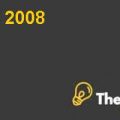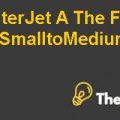The University Of Wyoming Men’s Basketball Team Case Study Help
Trial and Error Approach
The trial and error method was used to identify the correlation between the ticket sales and revenue and the three variables. The variables were changed based on the minimum and maximum value to identify the impact of these variables on ticket sales revenue. Three different scenarios were used and it was evaluated that the average ticket sales revenue of $17043 was close to the revenue calculated using trial and error approach.
Question No. 3
Revenue Prediction using Simulation Model
The Simulation model is used to analyze the entire process and uncertainties involved in the revenue and sales projection, by focusing on the usage of the repeated random sampling. (Merisalo, 2018) The total revenue for a 16 games’ season is forecasted as $201116, using the simulation model. To predict the revenue, three variables i.e. winning percentage, day of the game, and type of opponent have been taken as these variables have a significant effect over the revenuesgenerated from the tickets. However, for the simulation model; the winning percentage variable was used as it is a significant variable.
On the other hand, the average single ticket games sold in the last year amounting to $1060, has been used to predict the revenue. Moreover, the athletic department or the university will earn a profit of $22.8 million, considering the fact that the tickets will be sold at a mark-up of 20%. Similarly, the average of the winning percentage of the last three years have been used to predict the revenues. (See Exhibit 3)
Question No. 4
100 Simulation Season Using 50% Winning ratio
To predict the revenue for the upcoming season using a winning percentage of 50%; it is assumed that a total of 16 matches will be conducted in the upcoming 100 seasons, eight matches will be held with the conference team as an opponent and eight against the non-conference team. Moreover, to predict revenue of the 100 seasons; it is assumed that 947 tickets will be sold for eight conference games, and 1173 tickets will be sold for matches against the non-conference teams.
The assumption related to the number of tickets sold is based on the average tickets sold last year. Based on the assumptions and data used; it is predicted that the total revenue from ticket sales and concession sales will be $201036 in the upcoming 100 seasons. Also, the total revenue has been predicted after using the current ticket price of $12. (See Exhibit 4)
Question No. 5
Simulation Using Random Win percentages
The winning percentage and total revenues from ticket and concession sales have a linear relationship, which proves that the variable plays a vital role in the revenue forecast. Therefore, to project the revenue; random win percentages are used to evaluate the effect of changes in winning percentages on the revenue of the tickets. Also, the win percentage of 0.5 i.e. the average winning ratio of teams in the last four seasons is used.
The revenue has been forecasted for the upcoming 100 seasons, using a ticket price of $12 and assuming that there will be 16 matches in each season. The results of the simulation indicate that the revenues in each season are increasing as a result of an increased winning ratio of teams in that particular season. As a result of incorporating random winning percentages in the simulation; the average total revenues of $106517 are predicted. (See Exhibit 5)
Conclusion
One of the major sources of revenues for the athletic department at the University of Wyoming (UW) was ticket and concession sales that were generated through matches and other sporting games held by the university. Therefore, the senior director of the athletic department had to report the forecasted revenue generated through these games.However, many factors affected the sales of the tickets and ultimately revenue, as the revenues were dependent on three variables, which were: day of the game, opponent and winning ratio i.e. performance of the team. The relationship between these variables and the ticket sales was evaluated through using the multiple linear regression tool and Simulation Models..........................................
This is just a sample partical work. Please place the order on the website to get your own originally done case solution.











